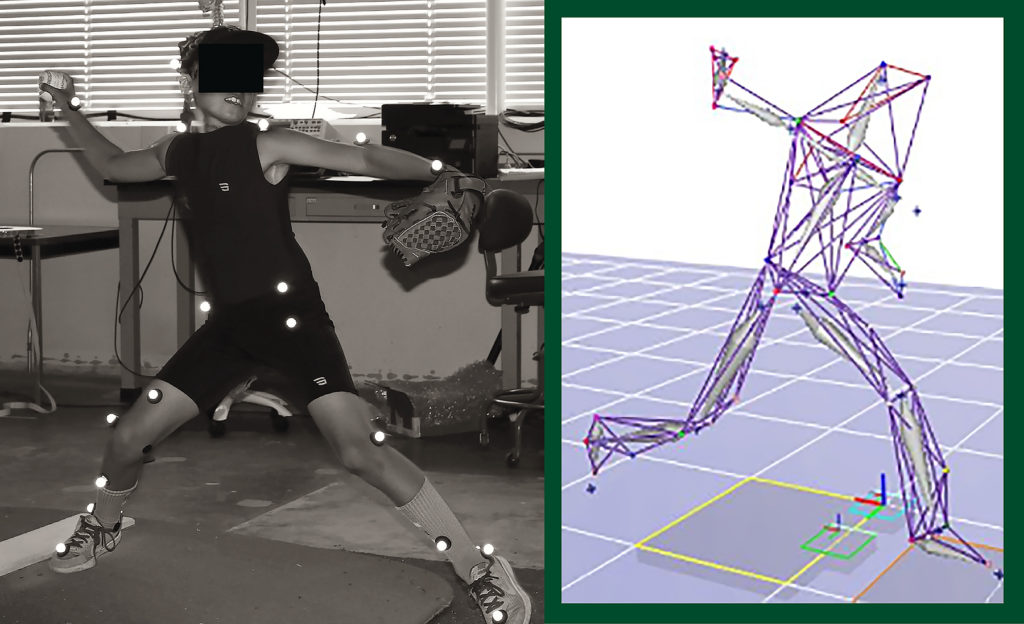Summer Undergraduate Research Program projects look at the biomechanics of pitching a baseball with the goal of reducing injuries in young pitchers
As a member of Cal Poly’s tennis team who has seen his time on the court curtailed by injuries, Karthik Padmanabhan is well aware of the stresses repetitive motion can put on your body.
The senior mechanical engineering student gained technical understanding this summer by participating in one of two Summer Undergraduate Research Program (SURP) projects led by professor Steve Klisch. The related projects study the biomechanics of young athletes participating in a different sport — baseball pitchers.
“I did not play competitive baseball growing up, but I did play tennis seriously and I have seen and experienced injuries that can stem from improper mechanics and high accelerations,” Padmanabhan said. “That is what peaked my interest in this SURP project.”
Sponsored by the Sprague Family Foundation, the projects aim to reduce injuries to pitchers’ elbows and shoulders often caused by an unsound, unbalanced pitching motion.
Along with mechanical engineering student Christina Fong, Padmanabhan spent the summer studying the myriad forces, torques and parameters of throwing a baseball, including arm loads and arm, trunk and leg kinematics. In the other project, biomedical engineering student Marissa Martinez studied how gait biomechanics are related to body mass index (BMI).

Because of the virtual nature of SURP 2020 brought on by the COVID-19 pandemic, the projects involved detailed analysis of existing research data from studies conducted by Klisch and students in the Cal Poly Biomechanics Lab.
“The most challenging aspect of the project was that our team was unable to conduct new experiments in our lab this summer,” Fong said. “Luckily, we had data from an earlier study that we could use for our own project. While at times it was difficult to use software through a remote desktop, I am very grateful that SURP allowed me to work on this project remotely.”
Although the project only lasted eight weeks, Fong said her team was able to reach some preliminary conclusions involving a pitcher’s stride length off the pitching mound and body mass by measuring eight kinematic parameters in a young athlete’s throwing motion and comparing them to elite pitchers.
“If an individual has a flaw in kinematic parameters, they are more likely to have an increase in joint kinematics and pitching injuries,” Fong said. “We noticed a possible correlation between stride length, front foot position, and body mass. We found that individuals with a higher BMI were not stepping out as far during their stride, and those with a lower BMI were stepping out too far.”
Fong, who played varsity softball in high school — “It has been really fun researching a sport I have grown up with” — said that while the team was not ready to offer technical pitching tips, she did have some general advice for young pitchers.
“They should really focus on developing proper pitching mechanics right from the start in hopes of decreasing future pitching arm injuries,” she said. “In addition, due to the high and repetitive joint kinetics that come from pitching, I’d encourage young pitchers to take care of their bodies and respect pitch count recommendations.”


